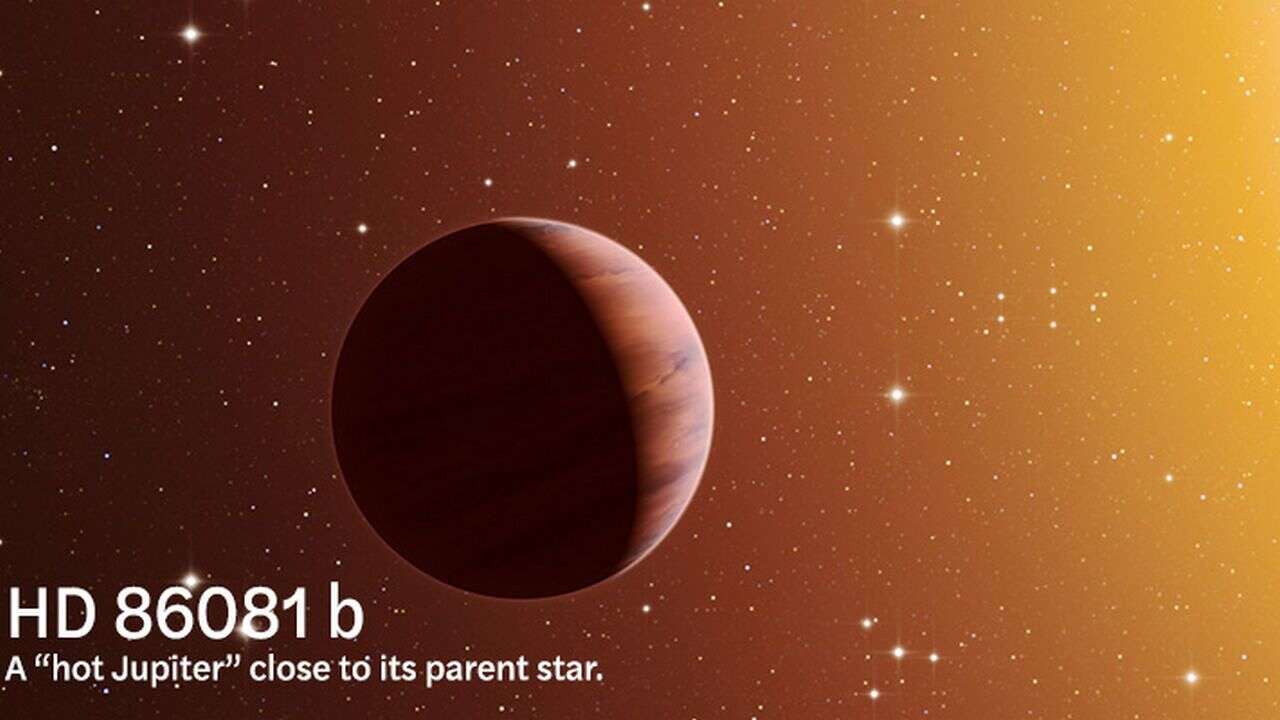
A white-yellow star in the Sextans planetarium and its Jupiter-like X-planets, named HD 86081 and 86081B, will now be Indian names.
The International Astronomical Union announced today that while the star will be called Bibha, the planet will be called Santamasa. The star was named a leading Indian woman scientist, Dr. Placed in honor of Vibha Chaudhary, who discovered the sub-particle, Pai-mason, Bhibha means “a bright ray of light” in Bengali. The planet is named Santamasa to denote the nature of the clouds in its atmosphere. Santamasa is the Sanskrit word for “cloud”.
The IAU chose the name at the end of a global competition called ‘NameExoWorlds’, which was held as part of its centenary celebrations. On July 28, the 100-year-old agency allowed every country in the world to give a selected name to a selected pair of exoplanets and its host star. India was allocated HD 86081 and its exoplanet HD 86081b.
The competition was launched on 10 July 2019. As of August 15, the deadline for submission, a total of 1,717 youths had suggested names, and ten were shortlisted for public voting by a committee of experts. The final entry was chosen after a vote by 5,587 individuals.
Ananya Bhattacharya, a 22-year-old student of Surat’s Sardar Vallabhbhai National Institute of Technology, suggested Bhibha’s name for the star and 13-year-old Vidyasagar Daud of Singhade Spring Dale Public School, Pune, suggested it for Santamasa. The planet.
Some other names approved by the IAU for other stars and planets from other countries include the legendary dog, Choker, Tuiren, from an Irish legend for a host star and its exoplanet located in the constellation of Canop Venici (Hunting Dogs). , Vadirum and Petra, the names of the ancient cities of Jordan for a star and its exoplanet in the constellations of Aquila, Baiduri, and Intan, containing gems in Malay language for a pair in the constellations of the Fournax (furnace) and Nakambe and Mauhoun. A star in the constellations of Iridanus (The River) and two major rivers of Burkina Faso for exoplanet.
Once a star and some of its features are found, they are listed in the Henry Draper catalog (HD) and a list of designations such as assigned telephone-numbers. “There is growing interest among astronomers and the public to keep the same name, as it does for solar system bodies,” says Eric Mamajek, co-chairman of the IAU’s NameExoWorlds Steering Committee.
Announcing the names at a press conference in Paris, the project manager, Eduardo Monfardini Pantido, said: “The IAU 100 Names Exo Worlds campaign provided an exciting opportunity for the public to help naming more than 100 new worlds and their stars . “
Director of IUCAA and member of National Committee of IAU Drs. Somak Raychaudhary said, “I am glad that we are after him by naming a unique cosmic body, Dr. Can recognize the contribution of Bibi Chaudhary. “
HD 86081 remained nondescript and anonymous, but in 2006 to discover the planet around the star. Ignoring the star’s minute-walk as the unseen planet tugged around it, John Asher Johnson, a California astronomer and colleagues concluded that a star was orbiting along an exoplanet.

The naming campaign was attended by more than 110 countries and more than 7,80,000 people worldwide and selected names for each exoplanet and its host star. In India, the campaign was coordinated by the Public Outreach and Education Committee of the Astronomical Society of India (ASI). ASI Dr. GC Anupama said, “ASI is very pleased that the IAU has accepted the suggested names from India.”
Bibhā, nee HD 8608, is located in the constellation of Sextans. It is as hot as the Sun, with a surface temperature of about 6,000 degrees Kelvin. It is 1.55 times larger, 1.21 times larger, and 1.75 times larger. It is so far away that it takes 310.93 years for the light to reach the Earth and so it is only visible from a telescope.
While the Sun, which is five billion years old, is a star of age Bibah, which is 6.210 billion years old. Santamasa, which is its only planet, is estimated to have 1.5 times the mass of Jupiter, which revolves around the central star in a nearly circular orbit in just 2.1375 days. The planet is expected to be very warm, orbiting near the host star.
Significantly, this year the Nobel Prize in Physics has been awarded the discovery of exoplanet partially orbiting a solar-type star.
The first exoplanet discovered in 1995, named 51 Pegasi B, was named Dimidium by the IAU in 2015 in the first NameExoWorlds public naming campaign. As of 1 July 2019, astronomers have identified 4,098 planets, of which 665 stars have more than one planet.





